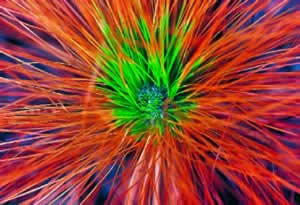
The Natural Georgia Series: The Fire Forest
Longleaf Pine-Wiregrass Ecosystem

 |
The Natural Georgia Series: The Fire ForestLongleaf Pine-Wiregrass Ecosystem |
 |
 Conserving
the Fabric
Conserving
the FabricIn Georgia, and across America, you can find remnants of the spectacular fabric of our natural world in the condition it was first seen by our American ancestors. However, in the exuberance of building our fortunes in a free society, this fabric has been stretched much too thin. In fact, in some places the fabric has been torn and may never be repaired. Sixty-five years ago some farsighted folks in Georgia understood that very well.
In Macon in 1936, the founders of Georgia Wildlife Federation charged future generations by setting forth our mission statement which reads: "To encourage the intelligent management of the life- sustaining resources of the earth-its essential water resources-its protective forests and plant life-and its dependent wildlife-and to promote and encourage the knowledge and appreciation of these resources, their interrelationship and wise use, without which there can be little hope of a continuing abundant life."
Over the intervening years we have developed literally hundreds of programs from the Habitat Stewards outreach to our Hunter Safety Certification classes to wetland and river protection in order to strive to achieve those ideals set forth in the mission statement and to which we are pledged. One of our more visible and ambitious efforts to accomplish this mission here at Georgia Wildlife Federation is the publication of the Natural Georgia Series books. This issue on Longleaf Pine-Wiregrass is the sixth book in that series.
The concept and purpose of our Natural Georgia Series publications is to bring to the fore information and an understanding of pieces of the natural fabric that are right at our doorstep in Georgia but about which we, the general public, often know very little and thus have little reason to appreciate. As examples: The Okefenokee Swamp (Natural Georgia Series, Volume 6, Number 1) What is the story and status of one of the most famous ecosystems in the country?; The Blue Ridge (Vol. 6, No. 2) What history, flora, fauna, and complicated forest issues are involved?; Urban Wildlife (Vol. 7, No. 1) What wildlife lives in our cities and towns other than a few birds and squirrels?; Barrier Islands (Vol. 7, No. 2) What are the riches that a casual stroll on the beach cannot reveal?; The Chattahoochee River (Vol. 8, No.1) Is it really the big deal and critical problem we keep hearing about? And then there is this current book about the Longleaf Pine-Wiregrass Ecosystem (Vol. 8, No. 2). This is probably a whole new piece of the Georgia world to the vast majority of our readers, but if you have read the pages previous to this one, you understand what a truly magnificent and important natural wonder it is and what a resource, responsibility, and challenge we have at our doorstep.
Perhaps you have been impressed by the land stewardship exhibited by many generations of the Cox family. Perhaps it was the culture and tradition of quail hunting that attracted your attention. Perhaps it was the enormous complexity of the ecology of the longleaf pine ecosystem that interested you. Or maybe it was the dramatic beauty of the description of the forest by Janisse Ray that inspired and intrigued you. Hopefully all of these and the remainder of the issue informed and energized you.
We still have a little time left because there is still some good "fabric" to work with. Fortunately in the case of the magnificent longleaf pine forest that once covered 92 million acres, we may still be able to do some credible restoration if we can develop the collective will to do so. That is the major purpose of this publication.
If we have provided information that, in the end, causes you to understand the need to restore and protect the longleaf pine ecosystem, then we have accomplished our Federation mission. As the old saying goes, "You can't truly appreciate what you don't understand." With the Natural Georgia Series, we are presenting what is needed to facilitate that understanding in order to stimulate the appreciation, in order to mend and conserve the fabric. We want our generation and future generations to enjoy a "continuing abundant life." It is to that end that Georgia Wildlife Federation dedicates our continuing best efforts and resources.
We hope that you enjoy this book and that it strikes the same urgent chord with you that it has with us.
Read and add comments about this page
Go back to previous page. Go to Fire Forest contents page. Go to Sherpa Guides home.